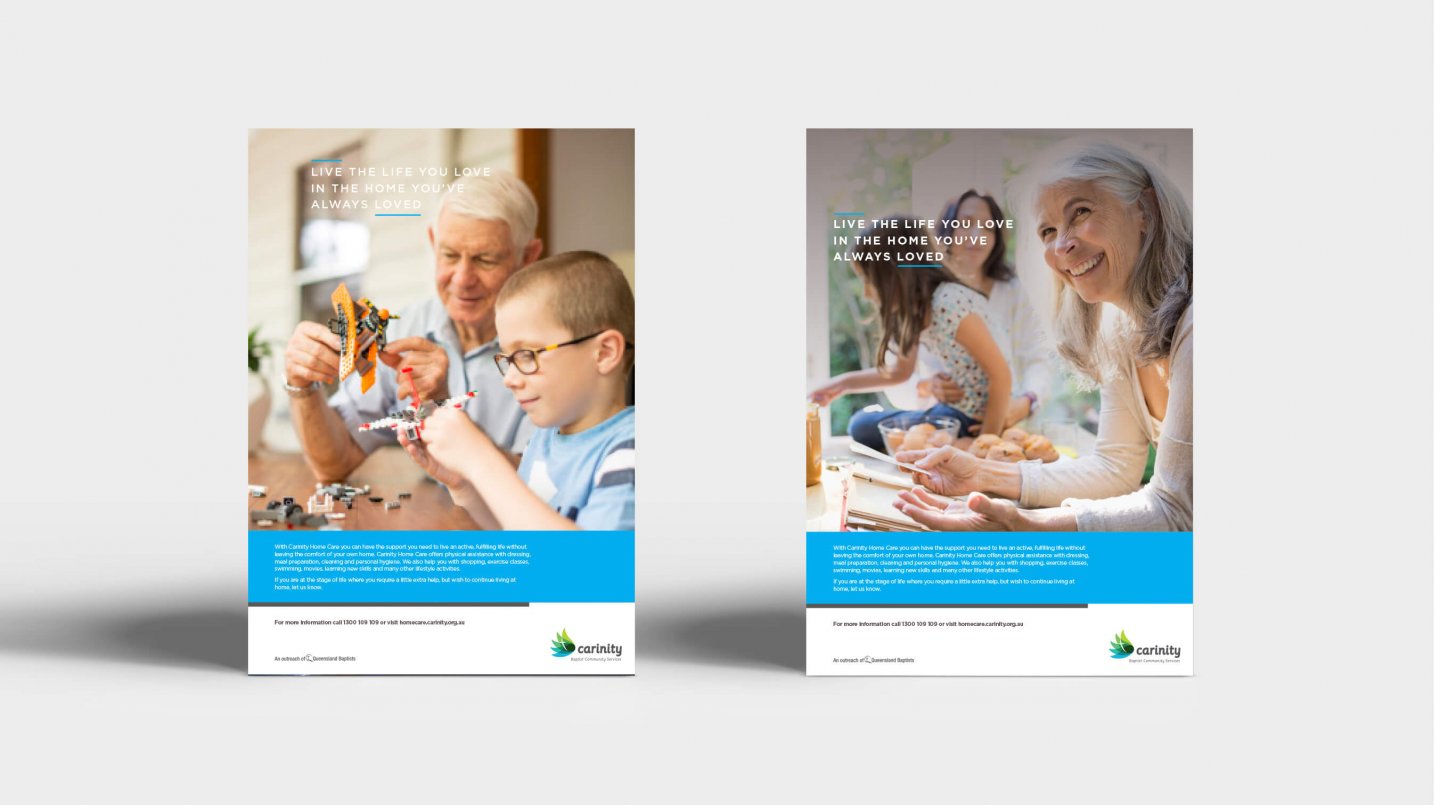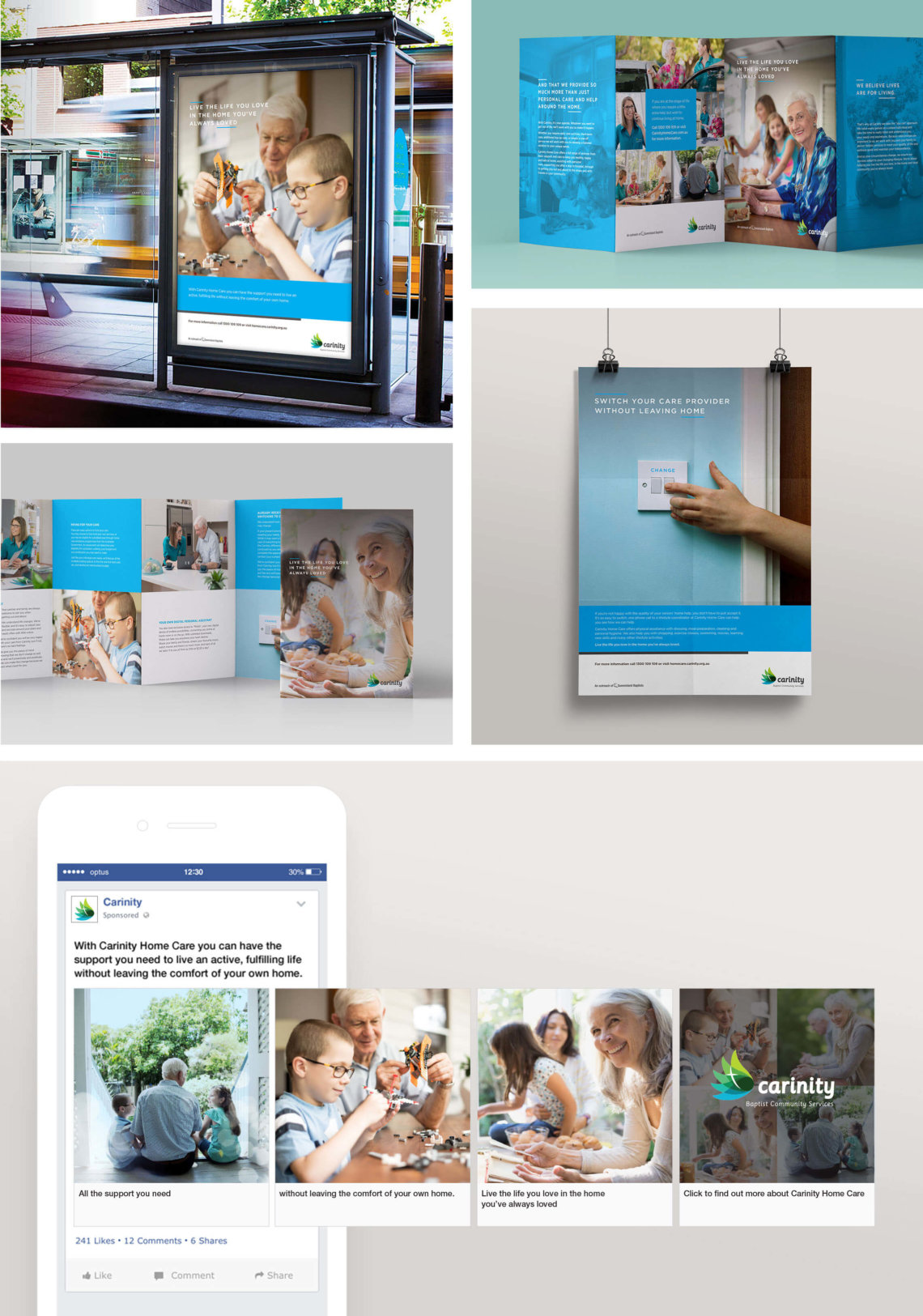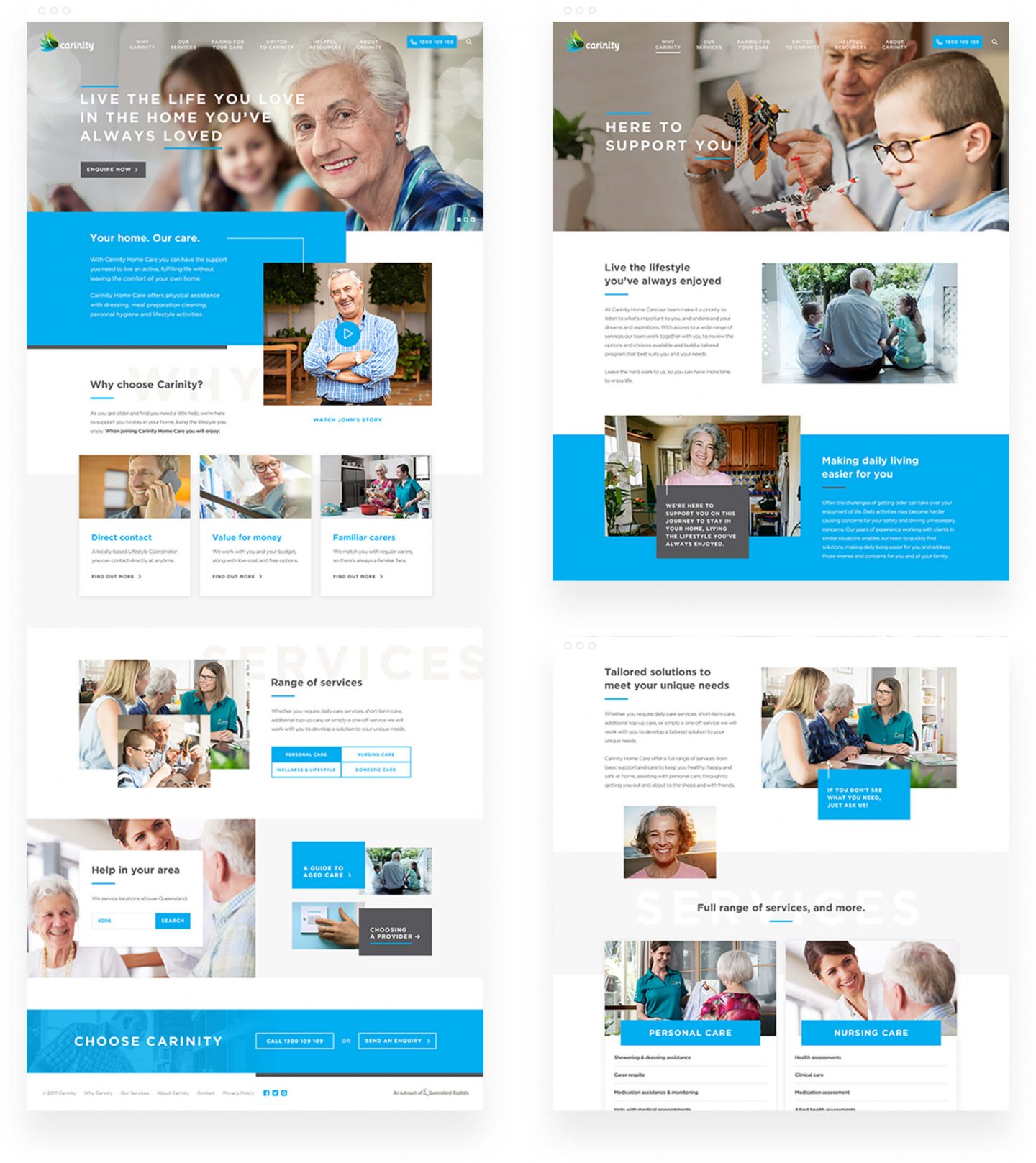The Challenge
Carinity (formerly Queensland Baptist Care) have been making an impact in people’s lives since 1949 through comprehensive and integrated community services including the provision of care to the ageing. With the aged care sector experiencing significant changes in recent years, especially with the introduction of the NDIS (National Disability Insurance Scheme), greater choice and control have become a reality for those seeking aged care. In order to help the aging community realise the importance and convenience of having an aged care provider that understood their needs and desires, Carinity required the tools to provide greater convenience for those seeking care as well as a refreshed brand image to position them as the leaders of in-home care services.

Our Solution
We began by establishing common market assumptions around aged care, noting that end consumers see aged care centres as their only option; family members are fearful that Home Care will not give their parents the same level of attention and range of services that they would receive in an aged care centre; and finally, those wanting to change aged care providers feel that they are stuck with their current provider of Home Care Services.
In order to change these assumptions, we sought to develop a creative campaign that resonated feelings of optimism, control, choice and independence, while also positioning Carinity as a brand with inherent values of community love and care.
The result was a subtle but poignant narrative that was natural, familiar, and authentic; shared across two TVC’s, print and digital advertising. We made sure to draw on classic aesthetics in direction and production – making sure to not mistake classic for drab and melancholy. For the television advertisements, we focused on showcasing the home as a place of comfort, with beautiful light and treasured decorations creating a feeling of a life lived and a life to come – a home. After all, that is what Carinity wanted to offer with their home care packages.
The narrative was hinged on three brand statements, ‘Live the life you love in the home you’ve always loved’, ‘help with home help is just a phone call away’ and ‘switch your care provider without leaving home’. These statements created a unified brand proposition for Carinity that they understood customers desire for comfort and control; thereby alleviating the common, negative assumptions around aged care.

When it came to engaging customers on a digital front, The Carinity website required a refresh to become more engaging and user friendly. This involved updating the branding, creating a better layout and platform for content, and providing a mobile-responsive experience for those visiting through a mobile/tablet device, which accounted for 36% of site traffic.
Our experienced UX and UI team enabled us to tackle these challenges head on, revising the site structure to provide a cohesive service-centred environment for users that placed emphasis on the key aspects of the business – residential aged care, home care and retirement living; encouraging engagement through non-invasive marketing automation. The site also catered to the customisation of individual service pages to a greater degree, thereby improving the presentation of content and contact details. With convenience at the front of mind, we ensured the site also included a search functionality to streamline the experience for repeat users (e.g. those seeking contact information). Finally, by implementing the site through WordPress, we sought to ensure more convenient back-end management for the Carinity marketing and ICT departments.


The Outcome
Since launch, the campaign has achieved positive results across television, print and digital, with positive sentiment being expressed by those in the target market. Additionally, Carinity have successfully re-positioned themselves as a leading care provider that places customer comfort first, evident by an increase in inquiries for their in-home care services. Additionally, the site has received a significant amount of traffic, particularly on mobile and tablet devices with both driving over 50% of total online traffic.